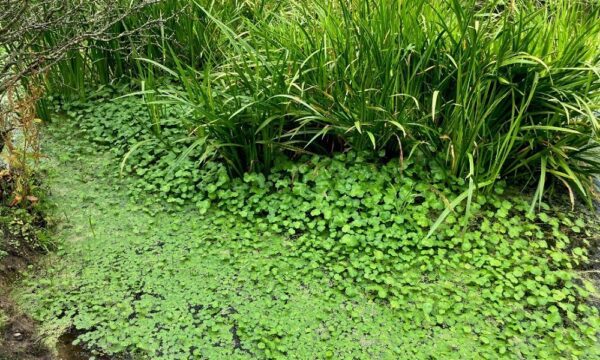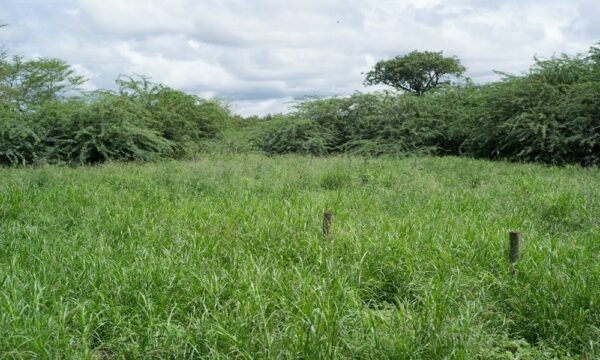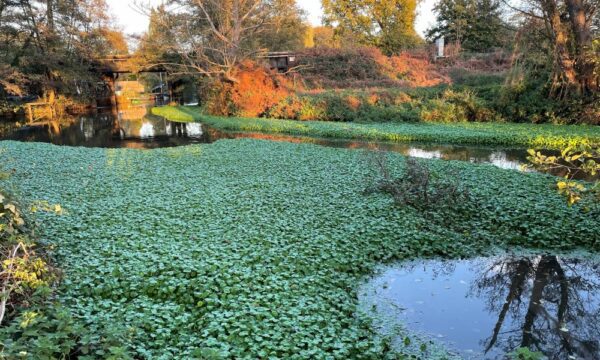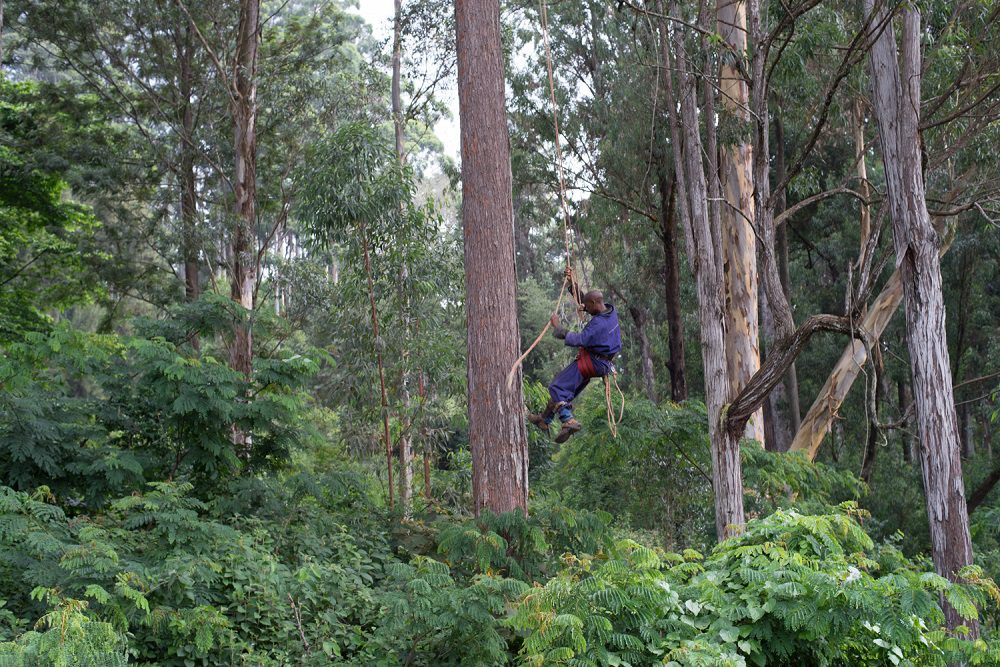
CABI joined an international team of researchers from 57 institutions around the world to share its expertise in a ground-breaking study which highlights the urgent need to protect the world’s forests from non-native pests amid climate change.
The study, led by Dr Iva Franić* – who at the time of the research was a PhD student co-supervised by CABI’s Dr René Eschen – stresses an urgent need to limit tree pests and enhance the resilience of forest ecosystems in the face of rising temperatures.
Published in the journal Scientific Reports, the scientists – that also included CABI’s Dr Marc Kenis and Dr Hongmei Li – argue that by understanding the intricate relationships between climate, host species, and geography, stakeholders can develop strategies to protect the world’s forests and the invaluable benefits they provide.
The study involved an extensive survey of insects and fungi associated with dormant twigs of 155 tree species at 51 botanical gardens or arboreta in 32 countries across six continents. The researchers determined the relative importance of various factors in driving differences in tree-associated communities.
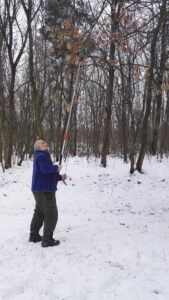
Dr György Csóka collected twigs for the study in Hungary (credit: G. Csóka)
The results indicated that mean annual temperature, phylogenetic distance between hosts, and geographic distance between locations were the primary drivers of dissimilarities.
Of particular concern was the increasing significance of high temperatures on the differences observed in the studied communities, suggesting that climate change could directly and indirectly impact tree-associated organisms through shifts in host ranges.
The researchers also found that insect and fungal communities exhibited greater similarity when associated with closely related host species, implying that host range shifts might facilitate the emergence of new pests.
Additionally, dissimilarities among tree-associated communities increased with geographic distance, implying that human-mediated transport could facilitate the introduction of new pests into a forest.
Dr Franić, who now works at Swiss Federal Institute for Forest, Snow and Landscape Research WSL said, “The study’s findings demonstrated that climatic factors played a crucial role in shaping the composition of fungi, particularly saprotrophic and plant pathogenic fungi, as well as herbivorous insects associated with trees.
“Moreover, the study highlighted the importance of host-related factors, such as phylogenetic distance and wood density, in shaping these communities. Closely related host species were found to share more species of insects and fungi, suggesting a co-evolutionary relationship.”
The scientists suggest that geographic factors also played a significant role, with the distance between locations emerging as a critical driver of diversity. The study found distinct geographic structure within continents for both plant pathogenic fungi and herbivorous insects, indicating limited dispersal between locations. However, the exchange of plant material across continents could lead to the introduction of new pests and pathogens.
Dr Eschen, a co-author of the research, said, “The findings of this study provide valuable insights into the complex dynamics of tree-associated communities and emphasize the importance of proactive measures to safeguard forest health in the face of environmental challenges.
“As climate change and global trade continue to shape our world, understanding and predicting these changes will be crucial for the long-term sustainability of our forests.”
The scientists conclude by stressing that safeguarding tree-derived environmental and societal benefits will, therefore, depend on limiting the establishment of new forest pests and increasing the resilience of trees and forest ecosystems to climate change.
Additional information
Main image: The ground-breaking study which sheds light on the potential impacts of non-native pests and climate change on global forest health (Credit: René Eschen, CABI).
Full paper reference
Iva Franić, Eric Allan, Simone Prospero, Kalev Adamson, Fabio Attorre, Marie Anne Auger-Rozenberg, Sylvie Augustin, Dimitrios Avtzis, Wim Baert, Marek Barta, Kenneth Bauters, Amani Bellahirech, Piotr Boroń, Helena Bragança, Tereza Brestovanská, May Bente Brurberg, Treena Burges, Daiva Burokienė, Michelle Cleary, Juan Corley, David R Coyle, György Csóka, Karel Černý, Kateryna Davydenko, Maarten de Groot, Julio Javier Diez, H. Tuğba Doğmuş Lehtijärvi, Rein Drenkhan, Jacqueline Edwards, Mohammed Elsafy, Csaba Béla Eötvös, Roman Falko, Jianting Fan, Nina Feddern, Ágnes Fürjes-Mikó, Martin M. Gossner, Bartłomiej Grad, Martin Hartmann, Ludmila Havrdova, Miriam Kádasi Horáková, Markéta Hrabětová, Mathias Just Justesen, Magdalena Kacprzyk, Marc Kenis, Natalia Kirichenko, Marta Kovač, Volodymyr Kramarets, Nikola Lacković, Maria Victoria Lantschner, Jelena Lazarević, Marianna Leskiv, Hongmei Li, Corrie Lynne Madsen, Chris Malumphy, Dinka Matošević, Iryna Matsiakh, Tom W. May, Johan Meffert, Duccio Migliorini, Christo Nikolov, Richard O’Hanlon, Funda Oskay, Trudy Paap, Taras Parpan, Barbara Piškur, Hans Peter Ravn, John Richard, Anne Ronse, Alain Roques, Beat Ruffner, Alberto Santini, Karolis Sivickis, Carolina Soliani, Venche Talgø, Maria Tomoshevich, Anne Uimari, Michael Ulyshen, Anna Maria Vettraino, Caterina Villari, Yongjun Wang, Johanna Witzell, Milica Zlatković, René Eschen, ‘Climate, host and geography shape insect and fungal communities of trees,’ Scientific Reports, 18 July 2023, DOI: 10.1038/s41598-023-36795-w
The paper can be read open access here: https://rdcu.be/dg8q8
Data set notes
The data set this paper is based on was published in March 2022 here: https://www.nature.com/articles/s41597-022-01162-3
Funding acknowledgement
The research was funded by the Swiss National Science Foundation Grant number 174644 and the Swiss Federal Office for the Environment (Grant 00.0418.PZ/ P193-1077). The work was also supported by COST Action “Global Warning” (FP1401).
Dr Franić’s PhD research
*The latest paper stems from work Dr Franić previously conducted as part of her PhD studies co-supervised by Dr Eschen.
In 2020, she obtained her PhD degree from the University of Bern in Switzerland, for her thesis entitled ‘The diversity of insects and fungi associated with trees: A plant health perspective.’
The research, which was led by CABI and the Federal Institute for Forest, Snow and Landscape Research (WSL) in Switzerland and funded by the Swiss National Science Foundation and related to COST Action Global Warning, assessed phytophagous insects and fungi in tree seeds purchased from commercial suppliers and fungi in tree seeds collected in botanic gardens in Europe and the USA.
The team also considered fungi and insects in dormant twigs from 32 countries to assess the diversity of such organisms and factors that may facilitate their establishment in other countries.
Related News & Blogs

